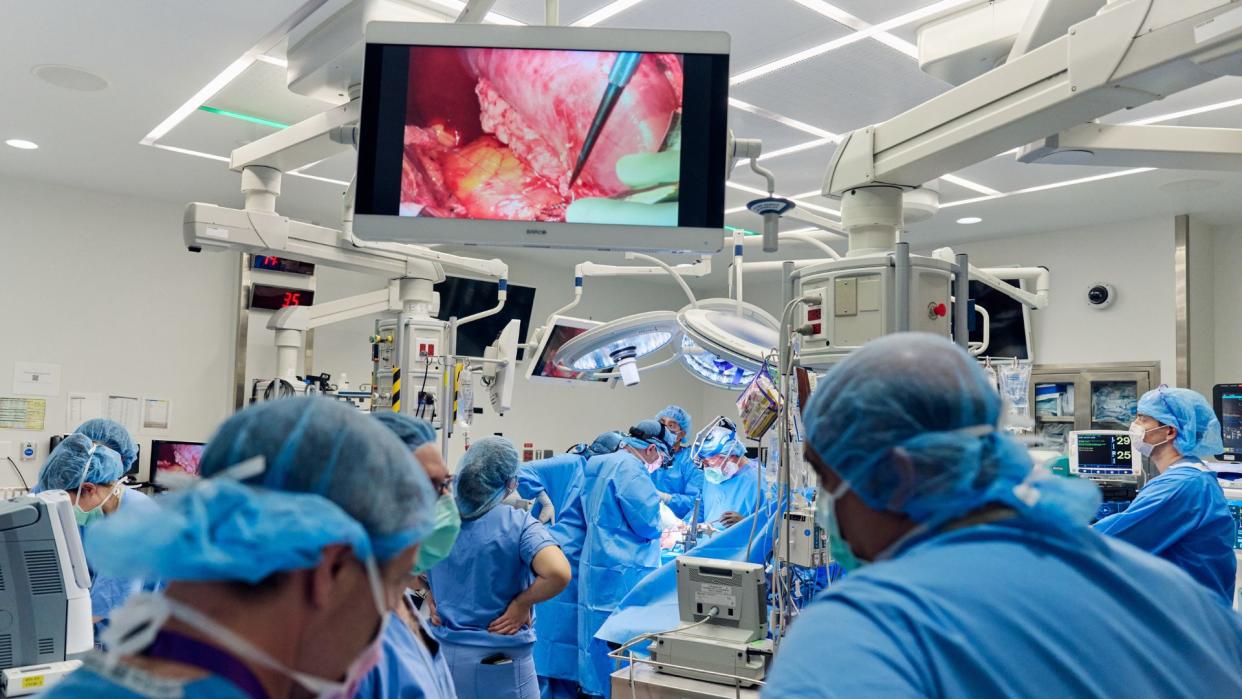'We have combined two marvels of modern medicine': Woman gets pig kidney and heart pump in groundbreaking procedures

In the first medical procedure of its kind, a New Jersey woman received a new heart pump along with a kidney and thymus gland from a pig.
Lisa Pisano, 54, had both heart failure and end-stage kidney disease, the latter of which required regular treatment with dialysis. However, she did not qualify for a traditional combined heart-kidney transplant because she had several chronic conditions that made her a poor candidate. There's a limited supply of human organs, so to qualify for multiple, a person has to meet certain criteria that suggest they'd have a good outcome.
Pisano's doctors at NYU Langone Health began looking into getting her a mechanical heart pump, called a left ventricular assist device (LVAD), which could extend her life. But getting the pump would be very risky while Pisano remained on dialysis, so she'd still have to secure a working kidney. Complicating the matter, the antibodies circulating in Pisano's blood meant she might have to wait years for a human kidney that "matched" her immune system to become available.
But she didn't have years to wait. "She only had weeks to live," Dr. Robert Montgomery, director of the NYU Langone Transplant Institute, told reporters at a news conference Wednesday (April 24).
Related: 1st partial-heart transplant growing with baby 1 year later
With no human kidney available, Pisano's surgical team instead looked to organs from gene-edited pigs.
In two procedures conducted over nine days in early April, Pisano received a heart pump and then a pig kidney and a thymus gland. The thymus helps train the body's immune cells, so including the gland should help prevent Pisano's immune system from rejecting the kidney, according to her doctors.
"No LVAD patient had ever received a kidney transplant of any kind — human or pig — and so we didn't know if it would work," Montgomery said. "We have combined two marvels of modern medicine in a novel way," he said.
When the team pitched this idea to Lisa, "she was gung ho about this from the beginning," Todd Pisano, Lisa's husband, said at the news conference. "I really do hope … that they OK this [procedure] and people can benefit from this type of surgery."
This is also the first time both a pig's thymus and kidney have been transplanted into a living person; NYU had previously tested a similar procedure in a brain-dead organ donor. The hope is that the thymus will not only reprogram Pisano's immune system but also allow her to use a lower dose of immune-suppressing drugs than would typically be needed. The thymus gland itself was embedded into the transplanted kidney.
RELATED STORIES
—1st-of-its-kind therapy blocks immune attack after stem-cell transplant
—2 pig hearts were successfully transplanted into brain-dead human patients
—What happens to your body when you're an organ donor?
The pig that both organs came from had been gene-edited such that its tissue lacked a specific type of sugar. Known as alpha-gal, this sugar triggers an immune reaction in humans that would have caused the organ to be rejected.
This type of gene-edited kidney is relatively simple compared with the kind recently transplanted into a man in Massachusetts. In that case, the man's new kidney came from a pig that had three pig genes removed and seven human genes added. Montgomery said that, due to differences in how each set of pigs is raised, it's likely that these simpler kidneys will be able to enter widespread use more quickly than the complex ones.
Now, 12 days out from her transplant, Pisano's kidney function "is perfect, and she has no signs of rejection," Montgomery said. She'll need time to fully recover in a rehabilitation facility before being discharged, he added.
Like Todd, Lisa hopes that, in the future, more people will have access to this two-pronged procedure. "My goal was to make sure that I'm set up for somebody else — that somebody else sees what I went through and decides to take a leap, take a chance," Lisa said in a video statement released by NYU.
Ever wonder why some people build muscle more easily than others or why freckles come out in the sun? Send us your questions about how the human body works to [email protected] with the subject line "Health Desk Q," and you may see your question answered on the website!
